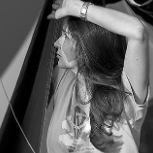CUBAN PETE
-
Ostatnio w Warsztacie
-

Waldemar_Talar_Talar 16 066
miłość to nie żart to
piękna część życia
smakuje jak chleb
pachnie nadzieją
miłość to uśmiech
smutek żal czasem
grzech pola łąki i las
czas który ozdabia dni
miłość uczy pokory nie
potrafi brzydko śnić
jest poezją która cieszy
nawet gdy pada i wieje
tak moi drodzy miłość
to nie puste słowo które
boi się nocnych cieni
ona zawsze rację ma
1
-
-
Najczęściej komentowane w ostatnich 7 dniach
-
- 27 odpowiedzi
- 447 wyświetleń
-
- 21 odpowiedzi
- 204 wyświetleń
-
- 20 odpowiedzi
- 326 wyświetleń
-
- 18 odpowiedzi
- 342 wyświetleń
-
Mniej więcej
Przez viola arvensis, w Wiersze gotowe - publikuj swoje utwory
- minimalizm
- spokoj
- (i 3 więcej)
- 18 odpowiedzi
- 370 wyświetleń
-










Rekomendowane odpowiedzi
Jeśli chcesz dodać odpowiedź, zaloguj się lub zarejestruj nowe konto
Jedynie zarejestrowani użytkownicy mogą komentować zawartość tej strony.
Zarejestruj nowe konto
Załóż nowe konto. To bardzo proste!
Zarejestruj sięZaloguj się
Posiadasz już konto? Zaloguj się poniżej.
Zaloguj się